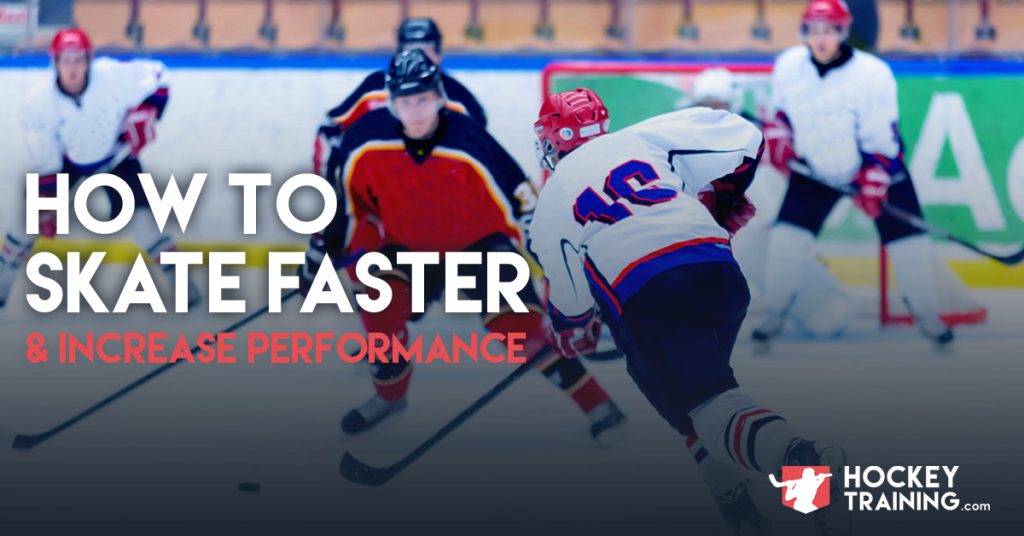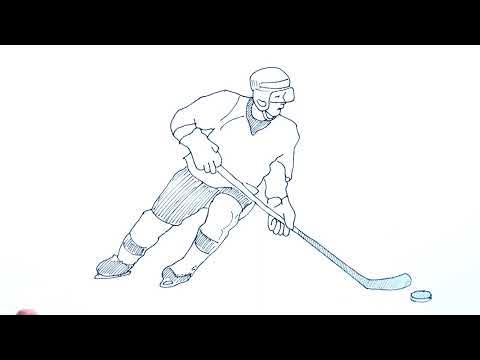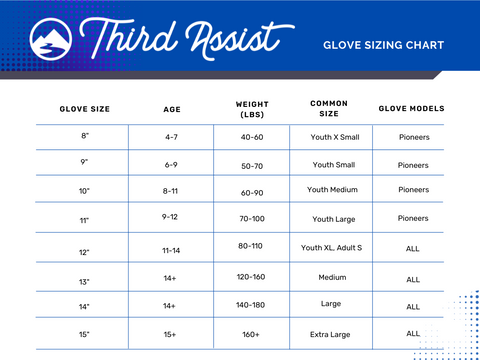Skating faster in ice hockey requires a mix of technique, strength, and practice. It’s not just about speed, but also control and precision.
Improving your skating speed can significantly boost your game performance. Whether you’re a beginner or an experienced player, skating faster can give you a competitive edge on the ice. With proper training and dedication, you can enhance your stride, balance, and overall speed.
In the following sections, we’ll explore effective tips and techniques to help you skate faster. From refining your skating posture to strengthening your muscles, these strategies will help you become a quicker and more agile player. Get ready to take your ice hockey skills to the next level!

Credit: next-level-athletics.com
Proper Skating Posture
Proper skating posture is crucial for increasing your speed in ice hockey. It helps you maintain balance, conserve energy, and improve agility. In this section, we will discuss the key elements of proper skating posture.
Knee Bend
Bending your knees is essential for faster skating. Your knees should be bent at a 90-degree angle. This lowers your center of gravity. It also provides more power to your strides. Keep your knees over your toes. This position helps in maintaining balance and stability.
Upper Body Position
Your upper body plays a significant role in skating posture. Keep your back straight but slightly leaning forward. Your shoulders should be relaxed, not tense. Avoid hunching or leaning too far forward. This can affect your balance and speed. Eyes should focus ahead, not on your feet. This helps in better control and awareness of the rink.

Credit: www.youtube.com
Optimizing Skate Fit
Optimizing the fit of your ice skates is essential for skating faster in hockey. A proper fit ensures maximum comfort, control, and efficiency on the ice. It can make a significant difference in your performance.
Choosing The Right Size
Skates that fit well help you skate better. Your toes should barely touch the front of the skate without cramping. A snug fit around the heel and ankle prevents slipping. An ill-fitting skate can cause blisters and affect your balance.
Try skates on with the socks you wear during games. This ensures the best fit. Walk around in the skates to check for comfort. If the skate feels too tight or too loose, try another size.
Lacing Techniques
Proper lacing is crucial for support and comfort. Begin by loosening the laces completely. This helps you slide your foot in easily. Once your foot is in, start lacing from the bottom.
Pull the laces tight through each eyelet, ensuring even pressure. Focus on the area around the ankle for added support. The top eyelets should be tight, but not overly so. This allows for flexibility and control.
Double-knot the laces to keep them secure during play. Check your laces regularly to maintain optimal fit. Proper lacing techniques can enhance your performance on the ice.
Perfecting Stride Technique
Perfecting stride technique is essential for skating faster in ice hockey. Improving your stride will help you gain speed and agility on the ice. This section will cover two key aspects of stride technique: Long and Powerful Strides, and Quick Recovery.
Long And Powerful Strides
Focus on extending your legs fully with each stride. Push off with your back leg to generate more power. Ensure that your strides are not too short. Longer strides cover more ice and boost your speed.
Bend your knees and keep a low center of gravity. This helps maintain balance and control. Practice this technique regularly to build muscle memory.
Quick Recovery
Quick recovery means bringing your leg back into position fast. After pushing off, return your leg under your body. This allows you to take the next stride sooner.
Maintain a rhythm to ensure smooth and efficient movement. Practice drills that focus on this quick transition. Consistency will help you improve over time.

Credit: www.youtube.com
Improving Acceleration
Increasing your acceleration in ice hockey is key to beating opponents. A faster start can give you the edge in tight situations. Whether you’re chasing the puck or breaking away, improving acceleration can make a big difference. Below are some tips to help you get faster.
Explosive Starts
Explosive starts are crucial for a quick burst of speed. Begin in a low stance with knees bent. Push off with the balls of your feet. Use your arms to gain momentum. Practice short, powerful strides.
Here’s a table to summarize the key points:
| Technique | Details |
|---|---|
| Low Stance | Knees bent, body leaned forward |
| Push Off | Use balls of your feet |
| Arm Movement | Drive your arms for momentum |
| Stride | Short and powerful |
First Few Steps
The first few steps are critical for speed. Make them count. Keep your strides short and quick. Focus on each push. Maintain a forward lean. Use your core for stability.
Follow these steps for better acceleration:
- Bend your knees and lean forward.
- Take short, quick steps.
- Push off with power in each step.
- Use your arms to drive forward.
- Engage your core for balance.
Practicing these tips will help you get ahead. Improve your acceleration and you’ll see the difference on the ice.
Enhancing Edge Control
Improving your edge control can help you skate faster in ice hockey. Edge control allows skaters to change direction quickly and maintain speed. It involves mastering the inside and outside edges of your skates. Let’s dive into specific drills and techniques to enhance edge control.
Inside And Outside Edges
Understanding your inside and outside edges is crucial. The inside edge is the inner part of the blade. The outside edge is the outer part. Practice shifting your weight between these edges. Start by gliding on the inside edge of one skate. Then switch to the outside edge.
Do the same with the other skate. This helps build muscle memory. It improves balance and control. Repeat this exercise regularly. It will make edge transitions smoother and quicker.
Crossover Drills
Crossover drills are excellent for edge control. Begin by skating in a circle. Use crossovers to maintain speed. Focus on pushing off with the inside edge. Then, land on the outside edge of the opposite foot. This motion should be fluid and continuous.
Practice both directions. This ensures you are comfortable with both left and right crossovers. Increase your speed gradually. This will help you gain confidence and improve your edge control.
Strength And Conditioning
Improving your strength and conditioning is essential to skate faster in ice hockey. It enhances your overall performance and speed on the ice. A well-rounded program includes both off-ice workouts and on-ice drills. Let’s dive into the key components.
Off-ice Workouts
Off-ice workouts are crucial for building the muscles you use while skating. These workouts help improve your power, speed, and endurance.
- Plyometrics: Exercises like jump squats and box jumps build explosive power.
- Strength Training: Focus on leg exercises such as squats, lunges, and deadlifts.
- Core Workouts: Planks and Russian twists improve stability and balance.
- Cardio: High-intensity interval training (HIIT) boosts stamina.
Remember, consistency is key. Aim for at least three off-ice workouts per week.
On-ice Drills
On-ice drills are just as important as off-ice workouts. They help you apply the strength and power you’ve built.
- Sprints: Short, intense sprints improve acceleration.
- Edge Work: Practice tight turns and crossovers to enhance agility.
- Starts and Stops: Quick starts and stops boost explosive speed.
- Backwards Skating: Enhances control and stability.
Integrate these drills into your practice sessions. Aim for at least two on-ice drills per week.
| Workout Type | Frequency |
|---|---|
| Off-Ice Workouts | 3 times per week |
| On-Ice Drills | 2 times per week |
Strength and conditioning form the backbone of skating faster in ice hockey. Combine off-ice workouts and on-ice drills for the best results.
Agility Training
Agility training is crucial for any ice hockey player who wants to skate faster. It enhances your ability to make quick movements, sharp turns, and sudden stops. Improving agility will give you an edge over your opponents.
Quick Turns
Quick turns are essential in ice hockey. They allow you to change direction swiftly and outmaneuver your opponents. Practice making sharp turns at high speed. Bend your knees and lean into the turn. This will help maintain balance and control.
| Steps | Tips |
|---|---|
| 1. Start with wide turns | Build confidence gradually |
| 2. Progress to tighter turns | Increase your speed |
| 3. Use cones | Set up a slalom course |
Stop-and-go Techniques
Mastering stop-and-go techniques is vital for any ice hockey player. These techniques involve starting, stopping, and restarting quickly. This skill helps create space between you and your opponents.
- Quick Start: Push off explosively with both feet.
- Sharp Stop: Use your edges to stop quickly.
- Rapid Restart: Pivot and push off immediately.
Practice these drills regularly. Focus on your form and speed. Consistent practice will improve your agility and overall skating performance.
Mental Focus
Building mental focus is crucial for skating faster in ice hockey. Your mind needs to be sharp and clear to make quick decisions on the ice. This section explores how visualization techniques and staying calm under pressure can help you achieve better speed and performance.
Visualization Techniques
Visualization is a powerful tool for improving speed. It helps create a mental picture of success. Here are some effective techniques:
- Picture yourself skating fast: Close your eyes. Imagine every detail. Feel the ice beneath your skates.
- Focus on perfect form: Visualize your body moving with precision. See yourself gliding smoothly.
- Imagine the game environment: Envision the rink, the crowd, and your opponents. It prepares your mind for real situations.
Try these techniques regularly. They can boost your confidence and performance.
Staying Calm Under Pressure
Pressure situations can slow you down. Learning to stay calm helps maintain speed. Here are some tips:
- Practice deep breathing: Inhale deeply through your nose. Exhale slowly through your mouth.
- Stay positive: Keep positive thoughts in your mind. Believe in your abilities.
- Focus on the moment: Concentrate on the current play. Don’t dwell on past mistakes.
Staying calm allows you to react quickly and efficiently. It keeps your mind and body in sync.
Frequently Asked Questions
How Can I Increase My Skating Speed?
To increase skating speed, practice proper technique, improve your stride, and enhance your strength and conditioning. Focus on balance and agility drills.
What Exercises Improve Ice Hockey Skating?
Exercises like squats, lunges, and plyometrics improve ice hockey skating. Incorporate agility drills and on-ice practice for best results.
How Important Is Technique In Skating Faster?
Proper technique is crucial for skating faster. Efficient movements reduce energy waste and increase speed. Focus on form and stride.
Do Skating Drills Help In Ice Hockey?
Yes, skating drills help in ice hockey. They improve speed, agility, and balance. Consistent practice leads to better performance.
Conclusion
Improving your ice hockey speed takes practice and dedication. Focus on your technique. Strengthen your legs. Enhance your balance. Consistent training leads to progress. Remember, small improvements add up. Stay patient. Keep pushing your limits. You will see results. Enjoy the journey.
Happy skating!



